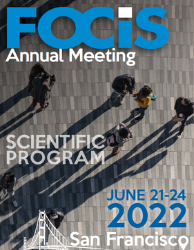Back
Autoimmune Diseases
The B Cell Repertoire in Multiple Sclerosis Reveals Molecular Mimicry between EBV EBNA1 and GlialCAM
Wednesday, June 22, 2022
4:30 PM – 4:45 PM PT
Location: Salons 5/6
Camille Brewer – Stanford University; Peggy Ho – Stanford University; Lawrence Steinman – Stanford University; William Robinson – Stanford University
Abstract Text: Infection with Epstein-Barr virus (EBV) is highly associated with multiple sclerosis (MS). Molecular mimicry of EBV antigens and antigens of the central nervous system (CNS) has been hypothesized to be a driver of neuroinflammation, but mechanistic evidence is scarce. To identify anti-viral antibodies in MS, we single-cell sequenced the antibody repertoire of B cells in the cerebro-spinal fluid (CSF) and blood of MS patients and identified clonal expansions of activated B cells that carry the hallmarks antigen-specific activation. A selection of these antibodies were tested against a spectrum of viruses implicated in MS pathogenesis. One antibody was identified that binds the EBV transcription factor EBNA1 at an epitope known to elicit high antibody reactivity in MS patients. We demonstrate that this EBNA1-binding antibody cross-reacts to the glial cellular adhesion molecule GlialCAM. We provide structural evidence for the evolution of GlialCAM-reactivity from an unmutated B cell binding only EBNA1. Cross-reactivity between the two antigens is facilitated by a post-translational modification of GlialCAM. EBNA1-GlialCAM cross-reactive antibodies are more prevalent in MS patients than in healthy controls. EBNA1 peptide immunization aggravates the mouse model of MS. Together, our results suggest that EBNA1-reactive antibodies can cross-react with the CNS-specific membrane protein GlialCAM and induce neuroinflammation, thereby exacerbating MS. Our results provide a long sought mechanistic link for the association between MS and EBV.

